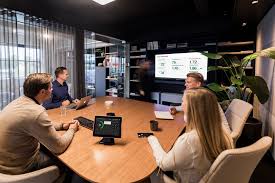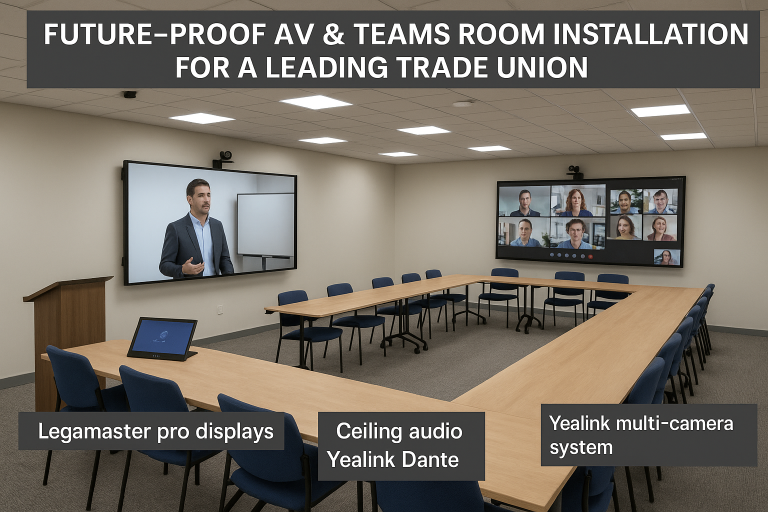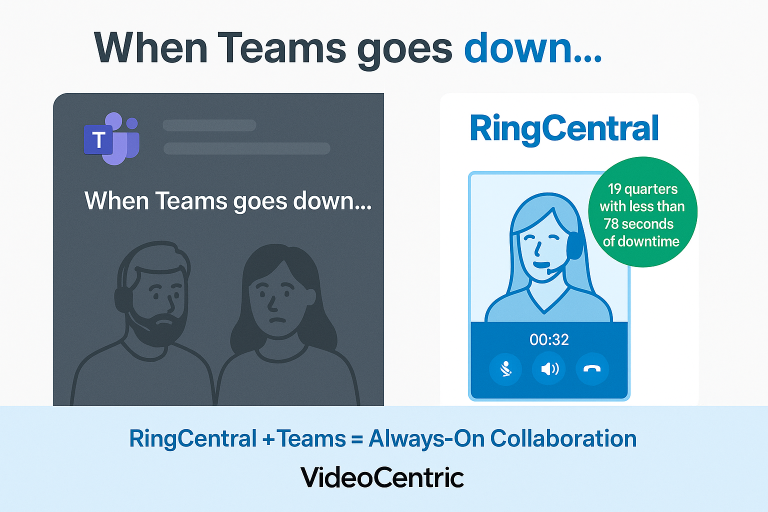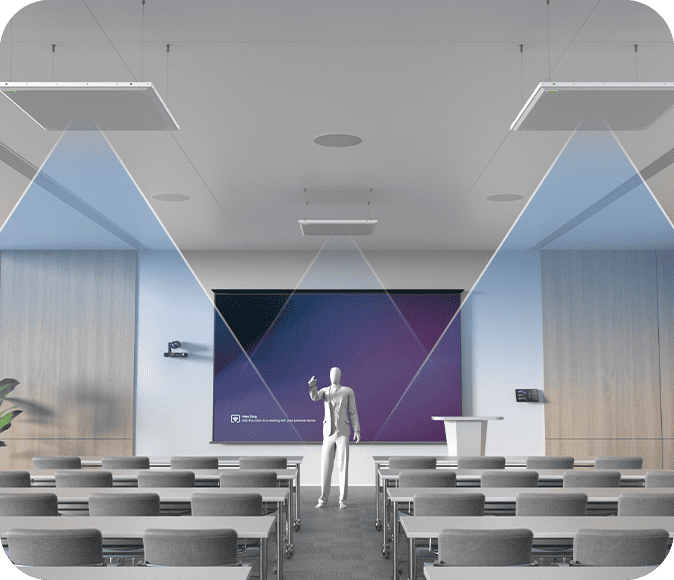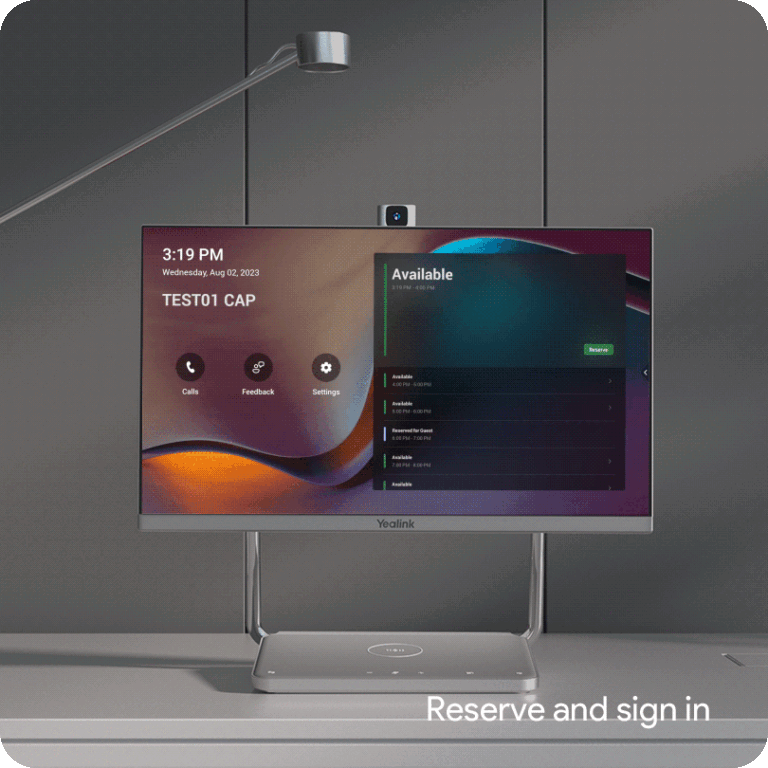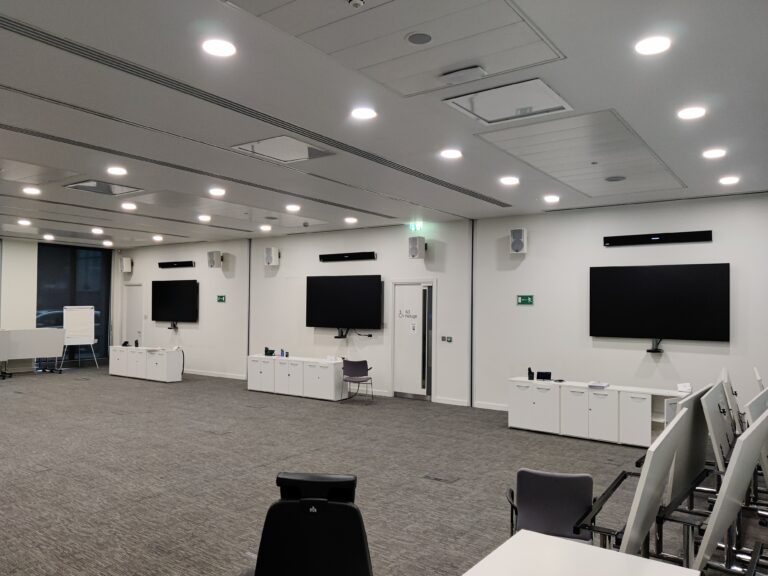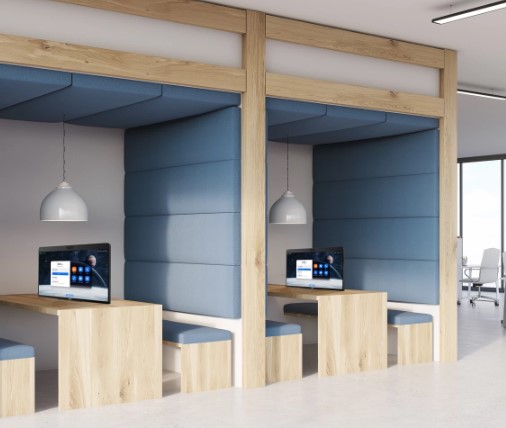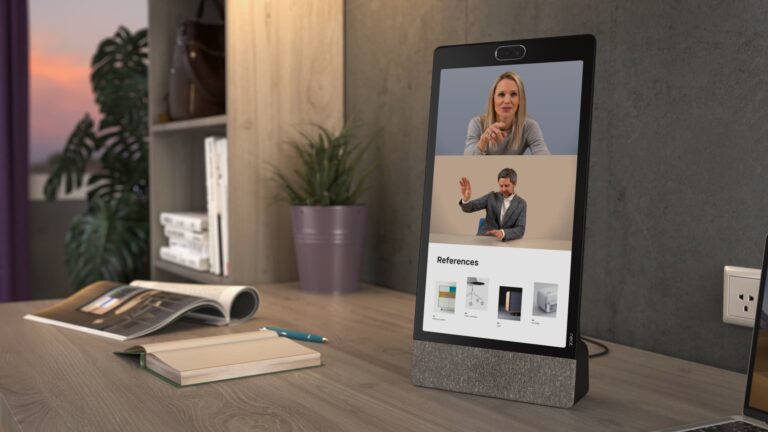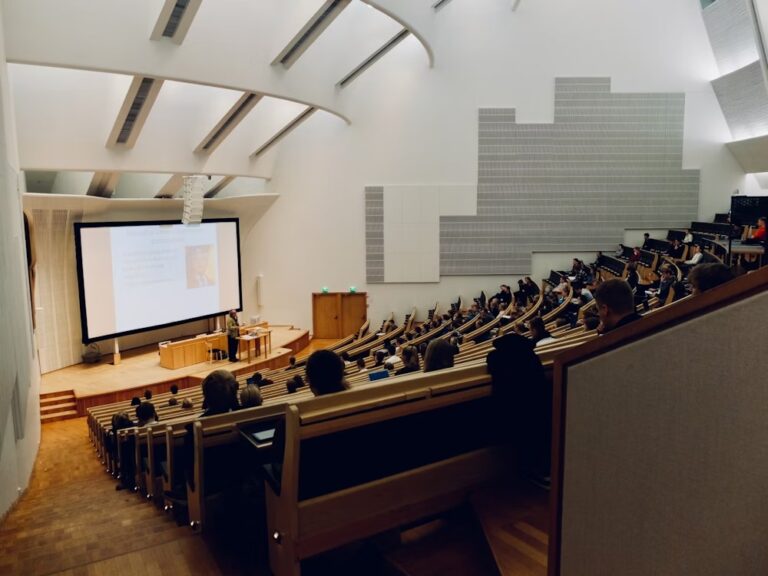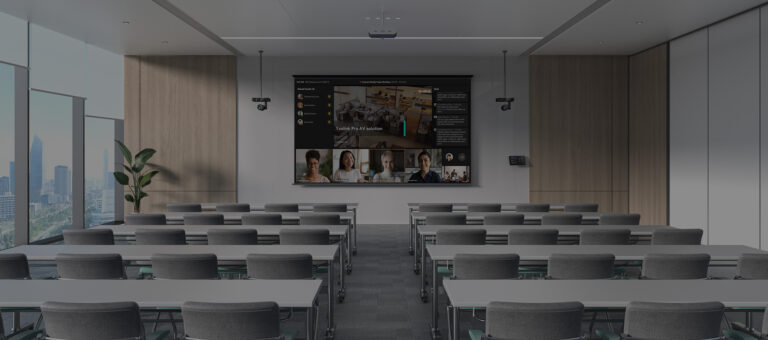As we enter 2024 and the recent festivities are behind us perhaps it’s a good time to consider your employees. What changes might they expect you to make in order to make to your workplace into a place they want to come to rather than one they occasionally have to visit.
What is going to make your workplace great again in 2024 and beyond?.
Growing evidence suggests that a steady return to the office will continue. Notable organisations such as Zoom and Amazon have imposed compulsory in-office time (usually around 3 days per week). It’s probable that because larger businesses are making this decision, others will follow their lead. Employees that attend the office will expect to return to a technologically upgraded workplace. Thus allowing them to be at least as productive as they are at home.
Here are some of the considerations that will help you achieve this.
Meeting room video conferencing
With 320 million active users globally, Microsoft Teams is currently winning the unified communications platform battle. Microsoft Teams Room (MTRs) systems offer a touch-panel with one-touch to join your video calls when the room is invited. Microsoft’s certified solutions include complete solutions from Yealink, Neat, HP/Poly, Logitech, Lenovo, DTEN and others. These can be paired with touch panels outside the meeting room, allowing for instant booking and visibility of upcoming room usage.
Removal of the “empty bathroom” syndrome
Modern offices are often designed with fashion in mind. That often comprises hard surface, lots of glass, exposed aircon ducting, modern chairs and lack of soft wall or floor coverings. Apart from the cold feeling this portrays, it is a design that is acoustically unfriendly. A hard room is a loud room; in other words highly resonant, like an empty bathroom. Not the ideal environment to conduct an in-house meeting, let alone a video conference. An MTR as described above will not absorb resonance and that shouldn’t be confused with echo cancellation. Your MTR investment could be wasted without acoustic treatment consideration.
Wireless Presentation
Most meetings involve discussion about content. Whether this is a slide deck, document, a whiteboard or a spreadsheet, meetings are more successful if information can be shared in real time. Traditional sharing was to plug in an HDMI cable to present from a fixed PC installed in the room, or Interactive Whiteboard, or extended to the meeting table to pug into a user’s laptop.
These approaches typically resulted in frustration – why?…
- HDMI cables can only be used with one device at a time.
- Many devices (Macs, some PCs and mobile devices) no longer have HDMI out without additional adapters.
- HDMI is not designed to be plugged in and removed frequently. Microsoft blame a substantial amount of PC faults on HDMI port problems. IF the HDMI cable is damaged, it can be expensive and disruptive to replace.
- HDMI itself doesn’t support touch-back or whiteboarding. If you’re using interactive displays; an additional USB cable is required for this.
- Some users don’t know the difference between HDMI and USB plugs forcing the wrong one into the wrong hole.
- Screen resolutions on different user’s laptops differ; their default one (from home) not operating correctly in the office.
Wireless presentation technology is generally in one of three forms:-
- USB Dongle
- WiFi Connection
- Mobile Mirroring
The USB Dongle approach was made successful by Barco with their highly reputed Clickshare range. Later reduced in cost by Yealink with their WPP dongles. Internal receivers in their Teams Room and Zoom Rooms solutions and their external RoomCast receivers. However, many organisations “lock down” USB ports to strengthen security and others object to dongles going missing. The latest trend is towards WiFi connected receivers from the likes of ScreenBeam. They require no specific software applications to be downloaded and provide a dongle-free approach.
Mobile devices typically use mirroring techniques such as Miracast and Airplay. These are sometimes received by the in-built wireless capability of the VC system. Particularly if it is a Video Bar solution. In other cases by an external receiver such as Screenbeam or Yealink Roomcast, previously mentioned.
Standalone Bring Your Own Device Conferencing
Whilst your boardroom and training room may benefit from a fully installed system. It is hard to justify replicating that across all smaller rooms. According to Microsoft, there are 90 million meeting spaces globally. Only a tiny fraction of these (about 0.01%) have a purpose-built Microsoft Teams video conferencing system in them. In others, just the camera and audio are permanently set up according to the characteristics of the room and a user brings their own personal meeting (BYOM) into the room on their own laptop.
BYOD solutions allow native calling from multiple platforms such as Zoom, Microsoft Teams, Webex and Google. The user interface is already familiar to the user and so mitigates requirements for support resulting from user error. However, the simple click-to-join approach of the meeting room is lost, and other participants can be left unable to start a meeting if the host is late.
Wired vs Wireless Bring Your Own Device Conferencing for Installed VC Rooms
We have already discussed the pros and cons of connecting a pair of HDMI and USB cables for presentation purposes. This is still the only method for many equipment manufacturers but Screenbeam, Yealink and Barco have taken BYOD / BYOM to the next level using WiFi or USB-dongle approaches to wireless BYOD as well as for presentation-only environments. Not all BYOD performs as well as it needs to though, as data throughput is high, some cameras work at higher speeds than others, and customers typically buy based on price and data sheet descriptions rather than consulting the experts for a side-by-side comparison of performance vs cost.
Costs can range from £200 to £3,000 and so it is important to understand the differences. Yealink MTRs and Zoom Room Systems may be natively registered to a single platform, but they have wireless BYOD access built in provided you’re happy to have a USB dongle to plug into your USB-A or USB-C slot.
Room Booking and Hot-Desking Solutions
Room booking panels and desk booking such as GoBright are becoming integral components of modern workplace design, optimising office space utilisation, employee satisfaction and overall efficiency. Booking panels positioned outside each meeting room provide real-time information about status and future availability. Casual users can instantly book or extend meetings directly from the panel which is integrated into your calendar system, such as Microsoft Outlook or Google Calendar.
Desk booking systems empower employees to reserve workstations in advance, fostering flexible and efficient use of reduced office space. These systems usually offer an online platform for reservations, integrate with office layouts to display available desks, may include customisable booking preferences such as specific areas or desk types and provide wayfinding for those in larger shared spaces. Mobile app support is common, enabling on-the-go reservations for a more dynamic and responsive workplace environment.
High Tech Desktop Equipment
As companies navigate the evolving landscape of workspaces, investing in cutting-edge desktop technology can play a pivotal role in enticing employees back to the workplace. Picture this: sleek, high-performance PCs adorned with the latest hardware, boasting processing power that effortlessly handles demanding tasks. In VideoCentric’s opinion, HP is leading the charge, offering workstations that marry style with performance, delivering an unmatched user experience.
One of the keystones in this technological revolution is the adoption of high-definition monitors. The vivid clarity and sharpness provided by top-notch screens, also from HP, can transform the work environment, promoting productivity and reducing eye strain. Beyond visuals, the integration of noise-cancelling technology in wireless headsets, such as those offered by industry leaders Yealink and Poly, creates a more comfortable workplace for returning employees through the elimination of background noise and reduction in distractions, fostering a more conducive atmosphere for innovation and collaboration.
As we reimagine the future of work, the allure of state-of-the-art desktop equipment becomes a compelling factor in the decision to return to the office. The seamless integration of high-tech desktop kit not only elevates the work experience but also serves as a tangible testament to a company’s commitment to providing an environment where innovation and productivity thrive and where employees are an organisation’s greatest assets.
Digital Signage
Display screens are often only used for a fraction of each day. Digital signage can be applied to such devices, for example to communicate updates on company performance, upcoming events and marketing messages. Synchronising content in foyer areas, in passageways and in meeting rooms, when not being used for presentations or video conferencing can create a much more inclusive feel for your employees. Poor management communication continues to be the No.1 complaint in surveys about employee satisfaction in the workplace, yet those same people are you most expensive and valued assets.
Videocentric is a collaboration technology specialist, providing business communications solutions since 2001. We would be delighted to partner with you to navigate the technology decisions deigned to help you deliver the best workplace experience for your teams.
If you would like to learn more about the technologies in this article, please contact our Sales Team

